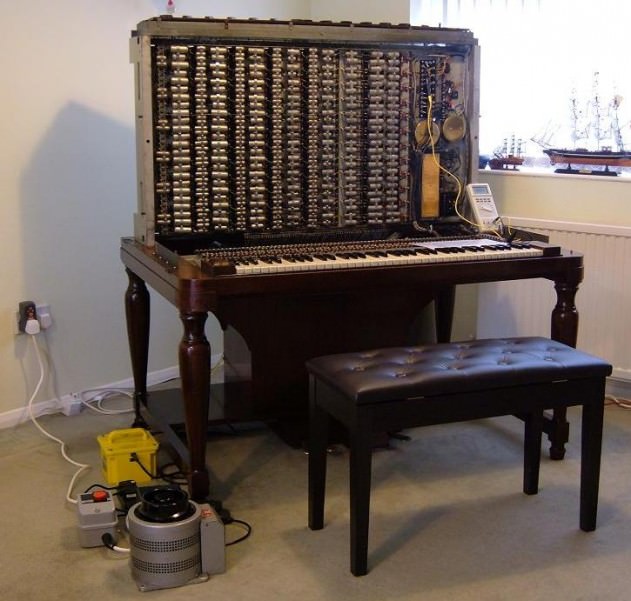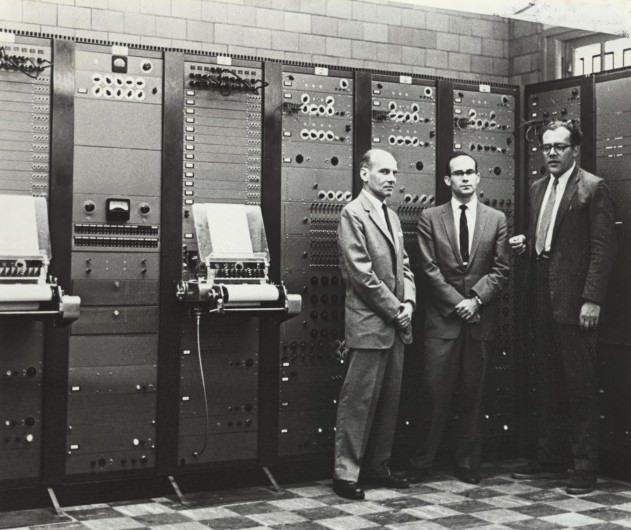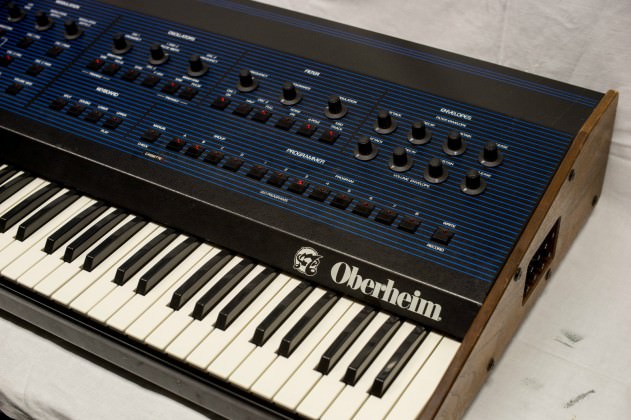
u-he are makers of award-winning software synthesisers and effects including Diva, Repro-1, Zebra2, Hive, Bazille, Presswerk and Satin.
Visit U-he

u-he are makers of award-winning software synthesisers and effects including Diva, Repro-1, Zebra2, Hive, Bazille, Presswerk and Satin.
Visit U-heLike many areas of audio recording and production, the underlying technological advancements were not meant for the music industry, but driven by the requirements of mass communication. Even before vacuum tube amplification heralded new possibilities in circuit design, filters were being developed for both experimental and practical uses. In fact, simple audio filters are easily built with little more than a capacitor and resistor, with an inductance coil as a useful additional extra.
Although telecoms and commercial radio dominated, the vacuum tube (or ‘valve’) also led to some early success in electronic music. Many additive tone-wheel instruments (like Hammond’s famed organs) included simple tone filters. The most elaborate of these new instruments was the Novachord, considered by many to be the the first polyphonic synthesiser. Besides many other innovations, it included a multi-stage band-pass filter. Most of these early filters, however, were relatively inflexible, with little in the way dynamic or user control.

The guts of a Novachord. (Photo:novachord.co.uk)
The 1950s saw a massive expansion in the use of electronics for music creation, with the biggest focus being given to experimental composition using simple sound generators, tape manipulation and filters for further tonal shaping. Although complex systems like the RCA Mark II (the first programmable electronic synthesiser) allowed for automated control of many parameters, filters at this stage were largely separate ‘boxes with knobs’ that required human input.

The RCA Mark II synthesiser
By the 1960s, transistor technology meant that smaller and more reliable filter designs could developed. This went hand-in-hand with the work done independently by the likes of Harald Bode, Don Buchla and Bob Moog on the creation of independent synthesiser building blocks, where sound parameters could be altered under external voltage control. This ultimately gave rise to the first voltage-controlled filters, the cutoff frequency of which could be brought under the dynamic control of a separate envelope module. To this day, one of the most revered designs is Bob Moog’s classic 24 dB/octave transistor ladder filter.
During the 1970s and 80s, integrated circuits were increasingly used in electronics design, and allowed single-chip filter to be built en-masse. SSM (Solid State Micro) and CEM (Curtis Electromusic Specialties) were the two dominant manufacturers in this area, with their analogue signal-processing chips finding their way into many synths, drum machines and samplers of the era.

The Oberheim OB-8 features eight CEM3320 filter chips
Moving into the 90s, digital technology dominated, with the widespread use of DSP (digital signal processing) replacing analogue techniques in nearly all areas. DSP relies on computational algorithms being written to manipulate the digital data stream in order to achieve the required audio processing effect. This type of code may run on a specialist hardware platform, but something similar is also used when writing plug-ins for use in DAWs. As with the analogue world, there are many different way of creating an audio filter.
In more recent times, this has been further complicated by algorithms that seek to replicate the sound of older analogue designs. The critical aspect to this being that analogue circuitry is never perfect. Technically or mathematically perfect does not necessarily mean the best, or most pleasing – just ask any vinyl junkie or ardent synth nerd – and imperfections can sometimes be difficult to capture in the language of maths.
20th October, 2015

u-he are makers of award-winning software synthesisers and effects including Diva, Repro-1, Zebra2, Hive, Bazille, Presswerk and Satin.
Download the demos and try them for yourself at www.u-he.com
Attack Magazine is funded by advertising revenue. To help support our original content, please consider whitelisting Attack in your ad blocker software.
x
04.09 PM
Thanks !
Good basic article, but I would assume the typical reader of attack mag already pretty much knew about filter frequency charts resonance, poles, comb filters, etc.
It would have been maybe interesting after a short introduction covering these topics, to move on to discuss in more detail the phase effects of filters, the different uses and possibilities of modulations routes, what makes a moog, DSI, arturia filters, sound so different, etc…
03.35 AM
Good article! I enjoyed the example filter types (Oberheim, Korg, Moog, Arturia). I often look for ways to describe differences in filters. I also appreciated the learning that analogue filter slopes are rarely linear. Guess I’ll have to go play with Ableton Lives new Cytomic filter types.